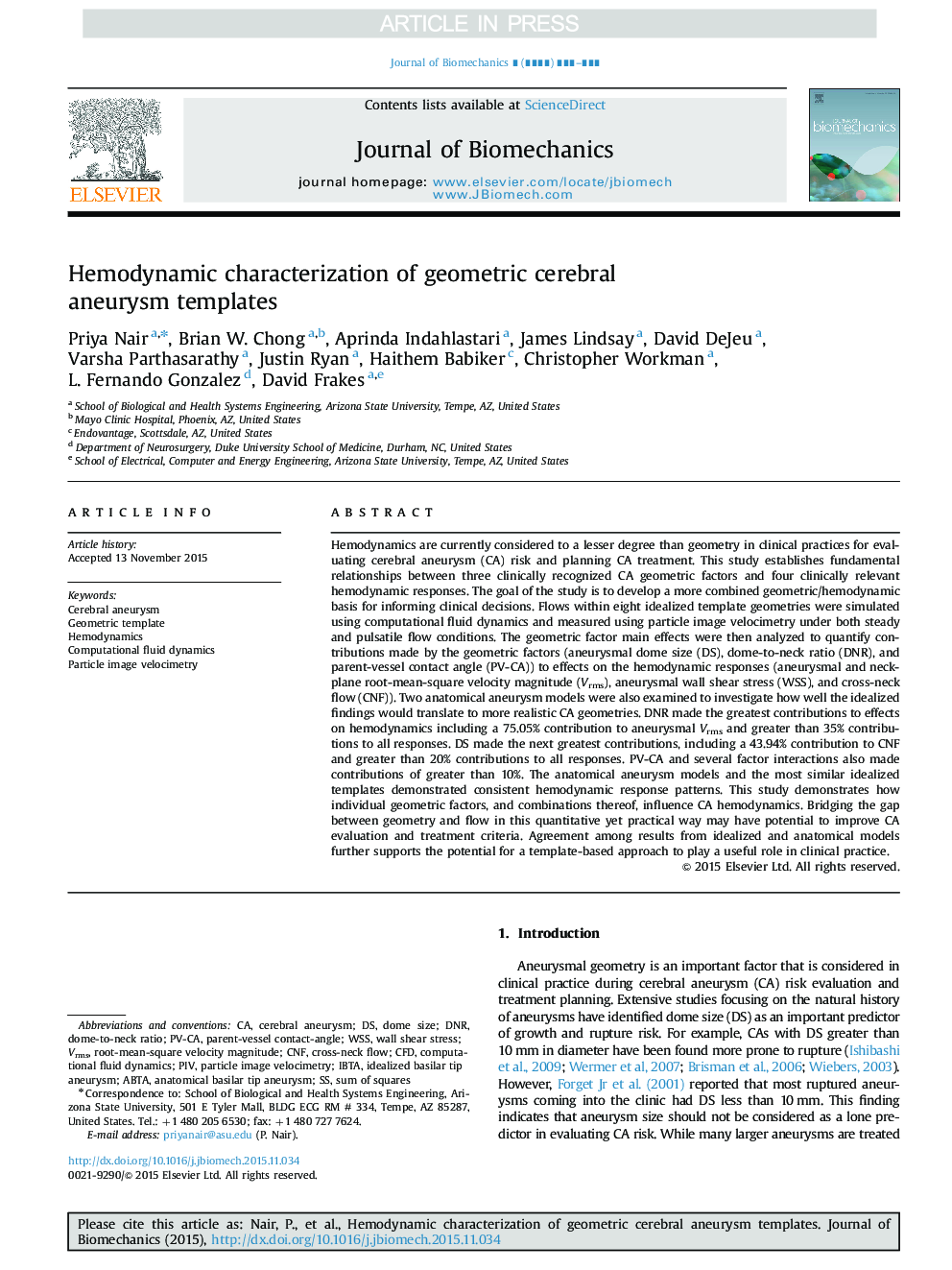| کد مقاله | کد نشریه | سال انتشار | مقاله انگلیسی | نسخه تمام متن |
|---|---|---|---|---|
| 5032366 | 1369982 | 2016 | 9 صفحه PDF | دانلود رایگان |
عنوان انگلیسی مقاله ISI
Hemodynamic characterization of geometric cerebral aneurysm templates
ترجمه فارسی عنوان
ویژگی های همودینامیکی قالب های آنوریسم مغزی هندسی
دانلود مقاله + سفارش ترجمه
دانلود مقاله ISI انگلیسی
رایگان برای ایرانیان
کلمات کلیدی
موضوعات مرتبط
مهندسی و علوم پایه
سایر رشته های مهندسی
مهندسی پزشکی
چکیده انگلیسی
Hemodynamics are currently considered to a lesser degree than geometry in clinical practices for evaluating cerebral aneurysm (CA) risk and planning CA treatment. This study establishes fundamental relationships between three clinically recognized CA geometric factors and four clinically relevant hemodynamic responses. The goal of the study is to develop a more combined geometric/hemodynamic basis for informing clinical decisions. Flows within eight idealized template geometries were simulated using computational fluid dynamics and measured using particle image velocimetry under both steady and pulsatile flow conditions. The geometric factor main effects were then analyzed to quantify contributions made by the geometric factors (aneurysmal dome size (DS), dome-to-neck ratio (DNR), and parent-vessel contact angle (PV-CA)) to effects on the hemodynamic responses (aneurysmal and neck-plane root-mean-square velocity magnitude (Vrms), aneurysmal wall shear stress (WSS), and cross-neck flow (CNF)). Two anatomical aneurysm models were also examined to investigate how well the idealized findings would translate to more realistic CA geometries. DNR made the greatest contributions to effects on hemodynamics including a 75.05% contribution to aneurysmal Vrms and greater than 35% contributions to all responses. DS made the next greatest contributions, including a 43.94% contribution to CNF and greater than 20% contributions to all responses. PV-CA and several factor interactions also made contributions of greater than 10%. The anatomical aneurysm models and the most similar idealized templates demonstrated consistent hemodynamic response patterns. This study demonstrates how individual geometric factors, and combinations thereof, influence CA hemodynamics. Bridging the gap between geometry and flow in this quantitative yet practical way may have potential to improve CA evaluation and treatment criteria. Agreement among results from idealized and anatomical models further supports the potential for a template-based approach to play a useful role in clinical practice.
ناشر
Database: Elsevier - ScienceDirect (ساینس دایرکت)
Journal: Journal of Biomechanics - Volume 49, Issue 11, 26 July 2016, Pages 2118-2126
Journal: Journal of Biomechanics - Volume 49, Issue 11, 26 July 2016, Pages 2118-2126
نویسندگان
Priya Nair, Brian W. Chong, Aprinda Indahlastari, James Lindsay, David DeJeu, Varsha Parthasarathy, Justin Ryan, Haithem Babiker, Christopher Workman, L. Fernando Gonzalez, David Frakes,
